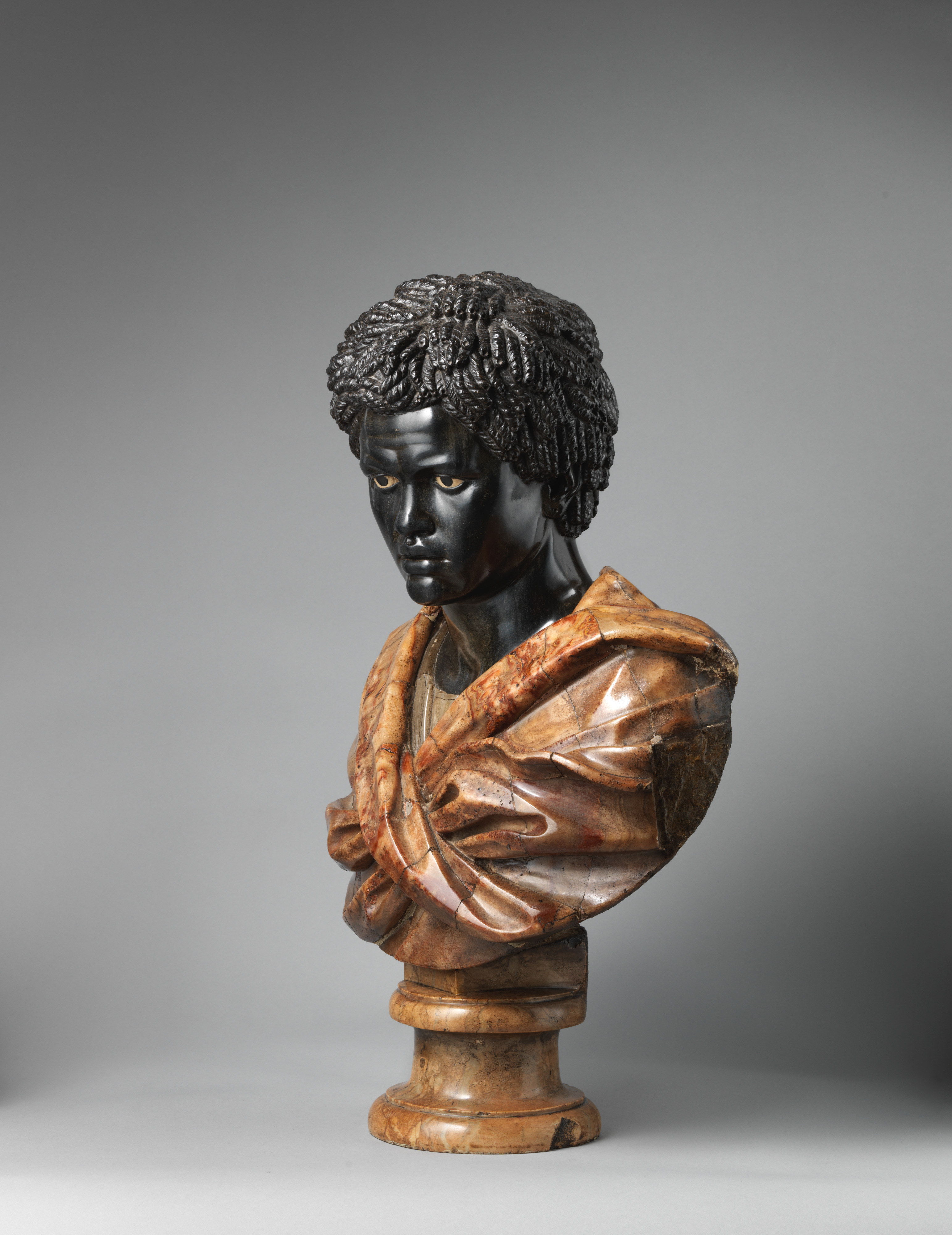Bust after the Borghese Moor
In emulation of Nicolas Cordier
Not on view
Trained in Saint-Mihiel in the workshop of the Richier family, Nicolas Cordier (1567-1612, called "il Franciosino") traveled to Rome in 1592, where he lived and worked until his death in 1612. By 1600, Cordier had garnered significant attention for his talent as a marble carver and restorer of antique sculpture. Between 1607 and 1612, he created a polychrome statue, called Il Moro (Louvre, Paris), using an antique torso as a base, for Scipione Borghese, the Cardinal Nephew of Pope Paul V. The black marble head of Cordier’s figure was evidently modeled after a bust of an African Man now in the Museo Nazionale Romano, tentatively dated to the second century CE. This bust was carved after Cordier’s Il Moro. As such, it exemplifies the tradition of taking busts from full-length figures that was popularized in France in the eighteenth and nineteenth centuries.
The European taste for sets, or pairs, of decorative objects, including sculpture, most likely inspired the creation of its pendant bust of a woman of African descent (2019.283.33). Together, the busts crucially represent the legacy of the Renaissance revival of ancient representations of Moors. Boldly colorful and the very embodiment of classical taste, the pair of busts probably functioned as decoration within a grandly embellished interior of the period.
Due to rights restrictions, this image cannot be enlarged, viewed at full screen, or downloaded.
This artwork is meant to be viewed from right to left. Scroll left to view more.



